 By Anita B Hoge
By Anita B Hoge
June 4, 2024
Data Is The Lifeblood Of The Global Well-Being Economy. A Statistical Plan Is Moving Forward In The United States To Change Our Capitalistic System Through Forced Compliance, Super Surveillance, and Mother Nature.
It’s the data. President Biden has pushed his Green New Deal antics and proposed a statistically threatening journey that should have Americans gasping for air. America’s days are numbered. Every financial transaction you make will align with an accounting framework that records your every movement by monitoring anything purchased or consumed through your carbon footprint. So where you 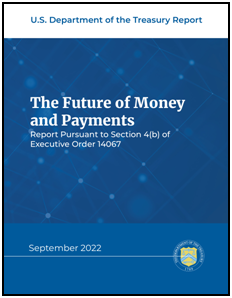 live, what you do, what you eat, and every aspect of your life will be monitored and resourced to its origin, a natural resource. Why? It is so that you can be monitored and taxed for every movement and carbon footprint. Read here: National Strategy To Develop Statistics For Environmental-Economic Decisions (Statistics Plan: Legislation source: p. 86)
live, what you do, what you eat, and every aspect of your life will be monitored and resourced to its origin, a natural resource. Why? It is so that you can be monitored and taxed for every movement and carbon footprint. Read here: National Strategy To Develop Statistics For Environmental-Economic Decisions (Statistics Plan: Legislation source: p. 86)
What is Net Zero? It balances the amount of greenhouse gases we emit with the amount we remove. We reach net zero when we add no more than what we take away. According to the World Economic Forum, “every financial transaction has a climate consequence – whether it is obvious, such as filling up your car with petrol or booking a long-haul flight, or subtle, like when you buy a coffee or a new pair of shoes, or even increase your cloud storage plan. Our daily choices leave a carbon footprint.” (Source)
Look at Mother Nature and how President Biden plans to change your life with every financial transaction you make. The Biden administration 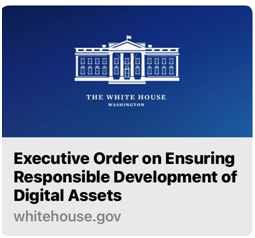 lays out a plan to reach Net Zero by changing the financial system in this country. Your consumption of natural resources and your carbon footprint will be subtracted from your income or added to the purchase price of products. You will be taxed accordingly. Data is streaming. The financial record-keeping will ultimately be tied to blockchain-based technology overseen by Central Bank Digital Currency (CBDC) to regulate this river of data. (The Future of Money and Payments), Money and Payments: The U.S. Dollar in the Age of Digital Transformation, k, Executive Order Digital Assets) Forced compliance and taxing will punish you until you change your daily life. Your purchasing behavior and what you own will be monitored assuring your targeted assets will be included. Capitalism and freedom are compromised through data optimization while your government is allowing you to be hacked. The intent, of course, is to create a global citizen that complies with Net Zero.
lays out a plan to reach Net Zero by changing the financial system in this country. Your consumption of natural resources and your carbon footprint will be subtracted from your income or added to the purchase price of products. You will be taxed accordingly. Data is streaming. The financial record-keeping will ultimately be tied to blockchain-based technology overseen by Central Bank Digital Currency (CBDC) to regulate this river of data. (The Future of Money and Payments), Money and Payments: The U.S. Dollar in the Age of Digital Transformation, k, Executive Order Digital Assets) Forced compliance and taxing will punish you until you change your daily life. Your purchasing behavior and what you own will be monitored assuring your targeted assets will be included. Capitalism and freedom are compromised through data optimization while your government is allowing you to be hacked. The intent, of course, is to create a global citizen that complies with Net Zero.
The Plan To Kill Capitalism In The United States.
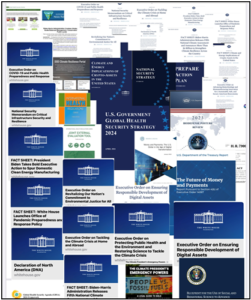 The Biden administration began this effort to destroy our country the day he took office, January 20, 2021, starting by signing Executive Orders unwinding President Trump’s policies, claiming a climate crisis. The United Nations’ fingerprints are all over this agenda, including the World Economic Forum, WEF, Office of Economic Cooperation and Development Council, OECD, and the International Monetary Fund, IMF, and WHO, World Health Organization. (Source, p.15)
The Biden administration began this effort to destroy our country the day he took office, January 20, 2021, starting by signing Executive Orders unwinding President Trump’s policies, claiming a climate crisis. The United Nations’ fingerprints are all over this agenda, including the World Economic Forum, WEF, Office of Economic Cooperation and Development Council, OECD, and the International Monetary Fund, IMF, and WHO, World Health Organization. (Source, p.15)
The OECD-Beyond GDP-Measure What Counts For Economic And Social Performance policy paper states that we should be “…measuring the joint distribution of income, consumption and wealth at the individual level…inequalities within households and the way resources are shared and managed.” The OECD refers to natural assets as “hidden capital.” These globalists believe our capitalistic economic system is “rigged” to benefit a few. (Beyond GDP: pg 19) Source: OECD Measure What Counts, Executive Summary, (Link here: (National Strategy To Develop Statistics For Environmental-Economic. Decisions)
The Overarching Biden Resilience Plan
The Biden administration initiated the Federal Plan for Equitable Long-Term Recovery and Resilience for Social, Behavioral, and Community Health on 1/20/2022, explaining that the COVID-19 pandemic had accelerated and exposed deeply entrenched disparities in health and well-being. Using the whole-of-government approach, President Biden revamped every government area to promote his well-being agenda. This plan cannot be implemented until statistics are collected to monitor natural resources in our everyday lives, and your carbon footprint can directly correlate to individual consumption. Time may be on our side.
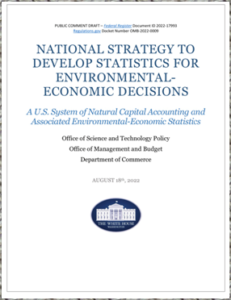 It’s The Data
It’s The Data
August 2022, President Biden delves into merging environmental statsitics into the United States economic model. Five months later the Biden administration released the national strategy to fund a 15-year statistical plan documented, January, 2023. The 15-year statistical plan written to measure the air you breathe, the water you consume, the food you eat, and the energy you use, will be all determined by nebulous numbers based on nature aligned to your every action. The Department of Commerce would need the ability to direct all financial transactions and the monetized value and quantity of your carbon footprint through consumption, in a standardized international format linked to every individual.
The entire 15-year Strategic Plan to be finalized by 2036 is based on three concepts: monetizing the value of natural asset boundaries cross-referenced to the behavior of individuals through consumption. (p. 15)
• direct contribution,
• defensive expenditures, and
• individual and household production.
“Environmental activities are one way of connecting environmental goods and services and natural capital to other economic sectors and capturing relationships among produced (capital), natural (capital), and human capital.” (Emp. Mine) (p. 49)
The Wellbeing and Sustainability Task Team includes “services individuals produce for themselves.” This topic is closely related to “unpaid household service work,” discussed in the 2025 SNA revision. (p.24) The smothering concept of monitoring EVERYONE in this agenda includes people who work (income) and people who don’t work and have no income, including stay-at-home Moms, retired persons, people on assistance, etc. Everyone is identified, monitored, and given a monetary value minus consumption. (See Wellness graph link here: United 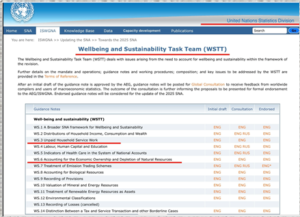 Nations Statistics Division. (2022). (p. 5) Wellbeing and Sustainability Task Team) (Important in how these services are tallied. Worth a look. Source: Unpaid Household Service Work🙂
Nations Statistics Division. (2022). (p. 5) Wellbeing and Sustainability Task Team) (Important in how these services are tallied. Worth a look. Source: Unpaid Household Service Work🙂
• FIRST: a system of statistics is being developed by putting a NUMBER on the quantity and value of natural resources that will be identified in nature (water, air, land, fish, wildlife, plants, forests, minerals.)
• SECOND: a value will is placed on using those natural resources in your everyday life. (Consumption)
• THIRD: a “stocks and flows” system will determine how natural resources are used in industry, households, and government. (See graph on stocks and flows on page 80.) You will be penalized twice for the amount of natural resources you use: purchase + consumption.
One investment vehicle failed last January at the Securities Exchange Commission/New York Stock Exchange, SEC/NYSE, called the Natural Asset Company (NAC). I believe the most important plan is the collection of data. The Statistical Plan is the weakest link which is a compilation of statistics to measure the consumption of natural resources that the Biden administration joined with the U.N., OECD, WEF, and the IMF and is moving forward.
NACS Natural Asset Companies Currently Withdrawn by the SEC: (SEC withdraws NACs-failed plan. “The New York Stock Exchange is initiating a partnership that enables trading of natural assets in the form of “Natural Asset Companies” to facilitate liquidity between natural capital and financial capital. Firms increasingly focus on voluntary frameworks to guide environmental, social, and governance (ESG) reporting, such as the framework developed by the Taskforce on Nature-related Financial Disclosures (TNFD) and the Natural Capital Protocol. However, business leaders often cite uneven data quality and definitions as a barrier to using natural capital in decision-making. A standardized, regularly- updated national system of natural capital accounts and environmental-economic statistics is necessary for these frameworks to succeed and to enable U.S. firms to compete as other countries develop such accounting systems.” (pgs. 9-10) NOTE: I believe the SEC withdrew the plan because the statistics were not wholly developed when the NACs were initiated.
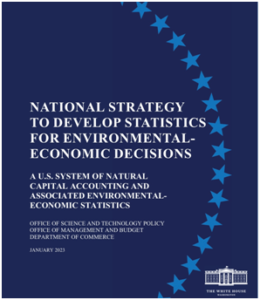 This is the plan needed for the globalists to succeed: A National Statistical Plan: (National Strategy To Develop Statistics For Environmental-Economic Decisions.
This is the plan needed for the globalists to succeed: A National Statistical Plan: (National Strategy To Develop Statistics For Environmental-Economic Decisions.
The Statistical Plan is proceeding with warp speed. The Biden administration is developing statistics for individual consumption of natural resources, your carbon footprint by referring to natural assets and climate change by using the terms “environmental injustice” and “inequities among households” (p. iv, p.11) and tracking progress on the UN Sustainable Development Goals (SDG). (p. 82)
This statistical plan is supposedly a way to balance the rich vs. poor on an equitable basis. Biden stammers through his latest speeches with comments about targeting billionaires, but his words have a deeper meaning than most could predict. Of course, the Biden administration wants the controversy erupting between the “average household vs. the rich” when, in essence, his agenda covers every person in the United States. So how is wealth redefined, and how will everyone, not only the rich, be punished by the Biden administration and the United Nations agenda?
Equalizing Households.
 The rich must be penalized, and there is no better way to punish them than by “equalizing households” through the consumption of natural resources. In essence, the more you own, the more you pay. But everyone uses natural resources; it’s not only the Robin Hood effect of “take from the rich.” According to the United Nations, the depletion of natural resources or Net Zero is everyone’s cross to bear. For example, property and consumption of any/and/all natural resources will be monitored: land, air, water, forests, minerals, fish, wildlife, plants, etc.
The rich must be penalized, and there is no better way to punish them than by “equalizing households” through the consumption of natural resources. In essence, the more you own, the more you pay. But everyone uses natural resources; it’s not only the Robin Hood effect of “take from the rich.” According to the United Nations, the depletion of natural resources or Net Zero is everyone’s cross to bear. For example, property and consumption of any/and/all natural resources will be monitored: land, air, water, forests, minerals, fish, wildlife, plants, etc.
Just think about how people are impacted every day by a natural resource. Your every movement will be monitored: from purchasing food, using gas/electricity to heat/air condition homes, charging your phones, taking a shower, turning on the lights, what you spend on groceries, beverages, alcohol, eating out at restaurants, farming, home gardening, construction, medicines, vacations, running the dishwasher, cooking, using the restroom, irrigating your yard, or playing outside, hiking, boating, swimming, sports and outdoor activities, etc. These examples do not address how these statistics will impact industry and manufacturing. The total for using natural resources will correlate to a score (your carbon footprint) that will be taxed or subtracted from your human capital (worth or wealth of the individual).
One comment in a footnote referenced in the Statistics Handbook defines where this agenda is going- if you put a canoe into the river, can they allot an amount of rent for using water? YES, RENT. The well-being and sustainability social accounts include everyone, even homemakers or caretakers of family members who do not make a salary but yet, use natural resources. This instance proves that these new environmental add-ons to economics and GDP, Gross Domestic Product, are extended to include everyone’s consumption. And that score means everyone. A new system that monitors EVERYONE’s BEHAVIOR will be instituted into the financial system even if you do not make a salary. Why? You are using natural resources every day. Your carbon footprint must be monitored. Net Zero is the goal.
Where Do You Live? How Will This Be Done?
A direct correlation gives a numerical account of the impact to the environment and personal use. ZILLOW is used to place an estimate of “hundreds of millions of property transactions within a hedonic framework to estimate property-level land values of residential, agricultural, commercial, and industrial land. These values are aggregated to local, state, regional, and national levels.” (p.43) Even though you have already paid for real estate or any product you personally use, you are fined or taxed a natural asset tax that will be monitored by location or through purchasing products. The combination of subtracting consumption from your income, will be correlated to your address for other debits or combined household production. This is an extreme method of wealth redistribution. (See footnote 24) U.S. Bureau of Economic Analysis. (n.d.). Regional Data: GDP and Personal Income. Retrieved August 5, 2022.
The Shut Down Of Capitalism
The thinking of this liberal U.N. agenda is that capitalism, a failed economic system, has created a too-top-heavy economy by only using GDP as an economic thermometer of how well the country is fairing. The rich are getting richer as the rest of the economy is lagging. They refer to this problem as “GDP Fetishism.”
“It used to be thought that America’s greatest strength was not its military power but an economic system that was the envy of the world. But why would others seek to emulate an economic model by which a large proportion – even a majority – of the population has seen their income stagnate while incomes at the top have soared?”
“The report by the International Commission on the Measurement of Economic Performance and Social Progress emphasized that GDP is not a good measure of how well an economy is performing. The U.S. Census reports remind us of the importance of this insight. Too much has already been sacrificed on the altar of GDP fetishism. Regardless of how fast GDP grows, an economic system that fails to deliver gains for most of its citizens and in which a rising share of the population faces increasing insecurity is, in a fundamental sense, a failed economic system. And policies, like austerity, that increase insecurity and lead to lower incomes and standards of living for large proportions of the population are, in a fundamental sense, flawed policies.” (Emp. Mine. Source: “America’s GDP fetishism“)
Another often-quoted author/economist who is recognized as an expert by the UN is Mariana Mazzucato, who wrote “Mission Economy: A Moonshot Guide to Changing Capitalism.” Mazzucato is also chair of the World Health Organization’s Council on the Economics of Health for All.
Let’s Talk About Freedom. Can You Put A Number On Walking On The Beach or Viewing A Scarlet Red Sunset?
The “National Strategy To Develop Statistics For Environmental-Economic Decisions” handbook explains this agenda as “a change in wealth held in nature.” The key is how wealth is changed or how our freedom will be affected by adding fees to our everyday lives. Changing the definition of wealth will eliminate the middle class with only super rich and BOP (bottom of the pyramid) poor people with a less than 15-year-phased in approach to destroy our capitalistic economy and private ownership of property. The fees will be astronomical. People will lose their homes and livelihoods by pushing industry out of business.
This idea of “double dipping” that you purchased something made organically or from a natural resource will relate to how you use or consume it. The biggest problem is grounded in the fact that the industry or consumer has already paid for whatever it is they are using. But first, they have to put a value on natural resources to create an algorithm to determine how they are used for consumption as an extra fee beyond the purchase price. The numbers are staggering.
“…connect information on nature and the economy to help America prosper as the country overcomes 21st-century economic challenges, including those linked to climate change, biodiversity loss, air and water pollution, and environmental injustice.” (p. ix) Remember to these environmentalists that maintaining a garden, fishing, or raising farm animals is ecocide. Every movement will cost you, and every behavior is correlated with nature.
Beyond GDP Gross Domestic Product (pg. 5)
“Economists often state that Net Domestic Product (NDP), which deducts for loss of assets—including natural assets—is a better benchmark measure of economic progress than GDP. The international community is expected to call for increased accounting for and attention to natural resource depletion, degradation, and growth and increased focus on NDP and Net National Income (NNI) as part of the 2025 update to the internationally agreed upon System of National Accounts (SNA). Change in wealth, inclusive of natural asset wealth, is also a critical indicator of sustainable development. By considering changes, rather than only depreciation, NDP or NNI can be linked to Adjusted Net Savings.” (p. 5) “Measuring the change in Natural Asset Wealth requires ascribing a monetary value to changes in natural assets in order to provide a common unit that can be compared. This Strategic Plan unifies environmental sectors and traditional economic sectors under a single framework.” (p. 34) “Guidance for translating these measures into a national-accounting context and back again will help strengthen the monetization components of the accounts and enable the natural capital accounts to be a starting place for benefit-cost analysis.” (p. 65) (Emp. Mine.)
What Is Counted And WHO Is Counting?
Equalizing The Inequality Within Households-The Mold For Conformity.
Income inequality is different from wealth inequality; the former involves salaries/wages, while the latter involves net worth. When the United Nations groups decide to target wealth, they target net worth with a focus on “consumption at the individual level” or “inequalities within households.” The Central Framework written collaboratively by the U.N. groups has targeted this agenda for some time. What is frightening is that the Biden administration is prepping our country to dive into changing our capitalistic economy without Congressional authority or American approval. See the International System of Environmental-Economic Accounting 2012 below:
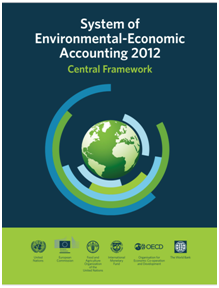 OECD “Measure What Counts For Economic and Social Performance:”
OECD “Measure What Counts For Economic and Social Performance:”
“Inequality in income and wealth has today a central role in policy discussions in ways it did not in 2009. But important progress is still needed in a range of areas, such as measuring what happens at both ends of the income distribution, integrating different data sources, and measuring the joint distribution of income, consumption and wealth at the individual level. When looking at inequality, it is also important to look at differences between groups (“horizontal inequalities”), at inequalities within households and the way resources are shared and managed, which are especially important in the case of wealth.…. It is also important to pursue efforts to integrate information on economic inequalities within national accounts, to provide metrics of how GDP growth is shared in as timely a fashion as output statistics.” (OECD Executive Summary)
The Statistical Plan Recommendation 3 is to meld the United States together with the United Nations Plan: Federal departments and agencies should embed the system of natural capital accounts and associated environmental-economic statistics in the broader U.S. economic statistical system through the following actions: (p.15)
a) Incorporate the internationally agreed-upon SEEA to guide development of U.S. natural capital accounts and environmental-economic statistics, where the SEEA standards are relevant and robustly developed. (See System of Environmental Economic Accounts, SEEA)
b) Adhere to three specific asset boundaries—direct contribution, defensive expenditures, and individual and household production—to accommodate different applications and contexts, which implies creating three partitions in the natural capital accounts.
c) Use rigorous and the best available economic science for monetizing the value of natural assets, with monetization being consistent with the three established asset boundaries.
All factories and industries in America should investigate the significance of the economic impact of “stocks and flows” definitions, which will impact fees attached to all products made or produced using natural resources. The Stocks and Flows Appendix B is the internationally agreed-upon guidance on national economic accounting, the SNA, with the NIPA. It is significant to evaluate the physical elements of natural resource services that pinpoint the areas provided through harvest or functioning in the environment.. (More details about the relationship between environmental-economic statistics and national economic accounts can be found in Stocks and Flows Appendix B.” (Quoted on p.15; go to page 80.)
STOCKS AND FLOWS
Appendix B. Connecting Natural Capital and Environmental-Economic Statistics with National Economic Accounts.
“Stocks and Flows”
“The concepts of stocks and flows are used throughout the Strategic Plan. Stocks are durable, physical elements of nature that can provide services either through harvest or through their regular functioning in the natural environment. When the services convey production, income, in-kind or implicit income, or future opportunities, then the stocks are capital or assets. Physical flows are the creation, destruction, or movement of material. For examples, the generation of particulate matter through combustion or the harvest of timber from a forest are physical flows. The process creating income is also a flow. The relationship between flows and stocks is similar to the relationship between kinetic and potential energy – flows reflect changes in stocks. This creates accounting identities that are used in natural capital accounting and environmental-economic statistics.”
“The environmental and natural capital elements of many of these indicators could be supported through supply-use and other underlying statistical organizations laid out in this Strategic Plan. SEEA compliant natural capital accounts increasingly play an important role in tracking progress on the U.N. Sustainable Development Goals (SDG). Other social progress measures, such as those based on subjective well-being or “happiness,” would require separate statistical efforts. Furthermore, purely biological or ecological indicators could be appropriately covered by other initiatives, such as the National Nature Assessment.” (p. 82)
“You will own nothing, and you’ll be happy,”
The World Economic Forum guarantees the probability and result of this quote, where Biden’s Green New Deal gives the money, data, and expertise needed to accomplish these goals. WATCH
Plan of Attack:
The United States began to collect environmental data in the United States when Nobel laureates William Nordhaus and James Tobin in 1973 wrote a seminal piece which noted “serious consequences of treating as free things which are not really free.” As a global leader in data collection, BEA, Bureau of Economic Analysis, initiated the Integrated Environmental and Economic Satellite Accounts (IEESA) published in 1994. At that time the Commerce Department was directed by law to suspend further work expanding the “National Economic Accounts to Include the Environment” until an independent entity analyzed the Commerce Department’s proposed methodology. A review panel working under the National Research Council’s Committee on National Statistics examined “the objectivity, methodology, and application of integrated 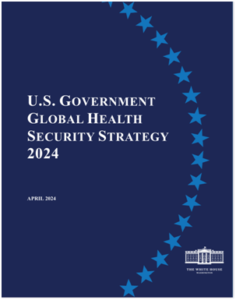 environmental and economic accounting in the context of broadening the national economic accounts.” This is an indication that we can suspend this agenda again. We must stop this plan. (Emp. Mine. Pg. 78) (Source: pg. 49) Note: “Practical challenges (remain) in implementing the theory in a consistent fashion.” (Link)
environmental and economic accounting in the context of broadening the national economic accounts.” This is an indication that we can suspend this agenda again. We must stop this plan. (Emp. Mine. Pg. 78) (Source: pg. 49) Note: “Practical challenges (remain) in implementing the theory in a consistent fashion.” (Link)
1. We MUST defund and stop this statistical package that combines natural assets with GDP, which will explode our capitalistic financial system in the United States. The data is the weakest link. The system must have individual data to monitor consumption accurately. Privacy is the issue.
2. A probable means of attack would be to challenge the subjective and arbitrary concept of monetizing or placing a “number or value” on a natural resource as consumption that impacts every person in the United States. The weight-of-evidence is therefore random.
The argument should focus on the arbitrary values placed on consumption in broadening the national economic accounts beyond GDP. We must question the numbers as not being objective, the methodology, and the application of how those numbers are applied by integrating environmental data into economic accounting.
3. Is consumption double dipping when you have already purchased property or any product? Should we be punished for using the outdoors
as recreation? What was the purpose of creating National Parks? Are the numbers real? Are the numbers believable? WHO decide Our freedom depends on you and our action today.
4. Vote to exit the UN. World Health Organization WHO Treaty meeting May 27-June 1, 2024. Pandemic Agreement Treaty and Amendments to International Health Regulation (IHR)
AUXILIARY QUOTES, NOTES, LEGISLATIVE AUTHORITY, DOCUMENTATION
© 2024 Anita Hoge – All Rights Reserved
E-Mail Anita Hoge: hogieshack@icloud.com





